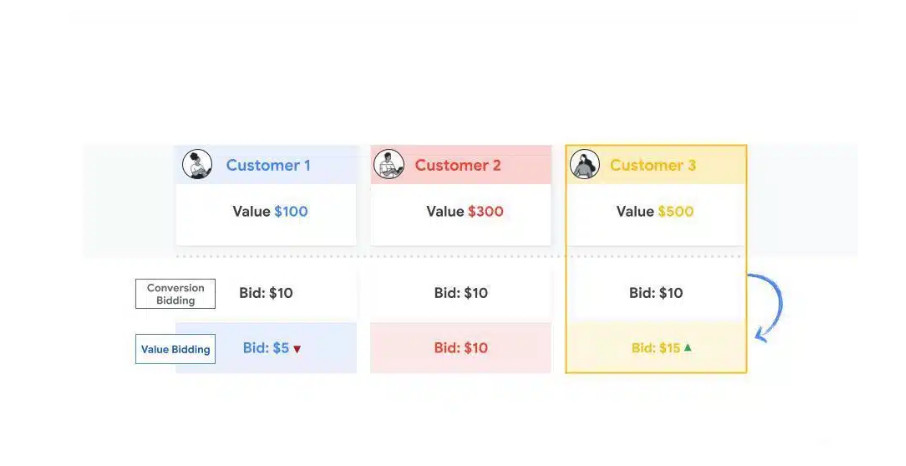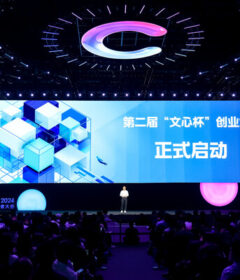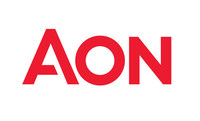2024 B2B trends: 6 key areas for marketing success

Staying ahead of the curve is imperative for long-term success in B2B. As we wrap up 2023 and look ahead to 2024, now is the time to evaluate our marketing strategies to ensure we are fully prepared for what’s to come. This article discusses six pivotal areas B2B marketers should focus on to kick off 2024 proactively.
1. Getting real with upper-funnel expectations
We need to rethink how we approach the early stages of marketing traditionally focused on brand awareness. Creating awareness with B2B buyers has never been more important.
Up to 90% of buyers have a set of vendors in mind before doing any research, and 90% of them will choose a vendor from the day one list, according to a survey by Bain and Google.
It’s unlikely you’ll win a customers if you’re not known to the buyers before they’re in the market.
Tracking upper-funnel and B2B activities is challenging but feasible. Many media platforms provide brand lift studies. Ask your representative or customer support for guidance.
You can also conduct advanced analyses like halo studies or incrementality tests to better understand the lift.
- Halo analysis allows us to look for a correlation between the independent variable(s) and the dependent variable to determine if there is a positive relationship between them (i.e., the tactic positively impacts revenue or leads).
- Incrementality tests measure the impact of your entire marketing campaign and individual campaign components that help drive traffic.
Dig deeper: Guide to PPC top-of-funnel reporting
2. Embracing the role of content in the upper funnel
When considering the upper funnel, focus on quality content. A strategic content approach helps build lasting connections with your audience.
Tailor content to provide value, attracting and keeping potential customers engaged using formats like blog posts, videos, webinars and interactive experiences.
Many B2B marketers struggle with poorly done and unattractive creative elements, including website design and functionality. Use heat mapping and behavior analytics tools like Microsoft Clarity to help identify any opportunities for improvement.
Also, review your value proposition. Many B2B marketers pay too little attention to the message they are delivering.
3. Building and sticking to investment in out-of-market buyers
Ninety-five percent of B2B buyers aren’t in market at any given time, LinkedIn Research suggests. Targeting only those “ready to talk to sales” means missing out on 95% of your serviceable addressable market (SAM).
Building and committing to investing in this substantial group is the only way to ensure that you generate mental availability – meaning your brand will be remembered without needing a cue. Mental availability is achieved by creating unique experiences that are memorable, exciting, and directly address the needs of your target audience.
The most critical factor for marketing success is creativity (47%), followed by media (38% encompassing reach, targeting, recency, and context), according to Nielsen.
However, a significant portion of B2B content is dull and uninspiring and fails to speak to the audience as real humans.
Here are a few examples of inspiring B2B messaging:
- Intuit Mailchimp: “Turn Clustomers Into Customers”
- LinkedIn: “No One Knows What You Do”
- Plus other B2B TikTok examples by Oktopost
4. Personalization: Tailoring experiences for maximum impact
Enhancing customer experience (CX) should be a top priority for B2B marketers. Slow load times are the most significant frustration factor, impacting 18% of B2B visitor sessions, a Contentsquare study reveals.
Additional pain points include rage clicks and multiple-use targets. This further highlights the need for optimized website performance and user-friendly design to improve customer satisfaction.
Every customer interaction is important, whether on a desktop or mobile device. We need to provide a consistent, positive experience at every touchpoint.
Making mobile interactions enjoyable can be a great way to attract more B2B customers. Deliver personalized and positive experiences for buyers who are browsing on their phones. This can also help create mental availability on mediums other than desktop.
5. Value-based bidding: Driving efficiency and ROI
Let’s shift gears and discuss what could be the most significant launch for B2B marketers: Google Ads value-based bidding (VBB).
In essence, VBB enables you to tell Google which customers are more valuable to your business, allowing the algorithm to bid higher or lower based on this insight.
You can use tags or online conversions to inform Google about customers submitting forms, requesting demos, or making purchases.
While many B2B transactions still occur offline through business development representatives, Google has simplified the process, offering direct integration with CRMs like Salesforce or HubSpot.
If you’re not leveraging VBB, you’re missing out on significant improvements, as demonstrated by a Tinuiti case study:
- A +38% increase in conversion rates.
- A +48% boost in opportunity rate qualification.
- A -23% reduction in cost per qualified opportunity.
6. Moving away from hyper-targeting
While hyper-targeting strategies, like account-based marketing (ABM), are popular in B2B, they aren’t without drawbacks.
A strong argument against hyper-targeting is its cost impact; the more granular and specific the targeting, the higher the associated costs.
This can strain marketing budgets, and in some cases, the return on investment may not justify the increased expenses.
Even if no wastage is assigned to hyper-targeting, the cost per acquisition is still higher than trying to go for a broader targeting, as described by LinkedIn in their 2030 B2B Trends report:

Additionally, hyper-targeting overlooks important blind spots.
Assuming that narrowly defining an audience ensures precision ignores the fact that over 40% of individuals are expected to change jobs, industries, or titles in the next four years.
This constant change introduces unpredictability, making hyper-targeting less effective as it doesn’t adapt to these dynamic shifts.
Given these challenges, there’s a rising interest in a flexible approach that acknowledges the changing nature of professional paths and the constraints of third-party data.
Embracing a broader targeting strategy with some flexibility allows B2B advertisers to navigate the changing landscape more effectively, striking a better balance between precision and adaptability and possibly achieving more sustainable and cost-effective results.
Reflect, prepare and plan
As we look ahead to 2024, it’s clear the B2B marketing landscape is ripe for transformation. From optimizing the upper funnel to enhancing personalization and shifting targeting strategies, we can evolve our approaches for greater efficiency and sustainability.
By taking time now to reflect on these key trends and their implications for your business, you can make informed decisions to kick off next year in an optimized, proactive state.
Rethink conventions and consider emerging best practices to drive meaningful results while staying ahead of the curve.


